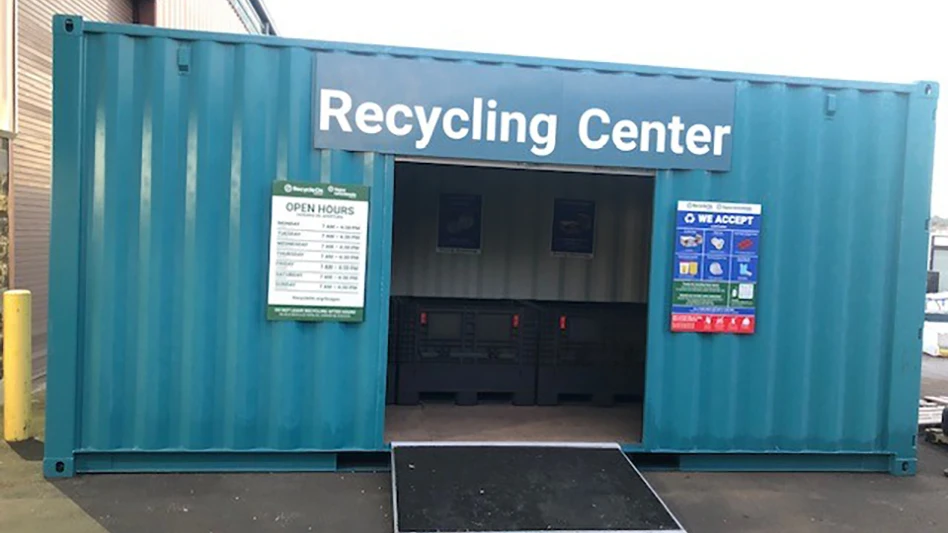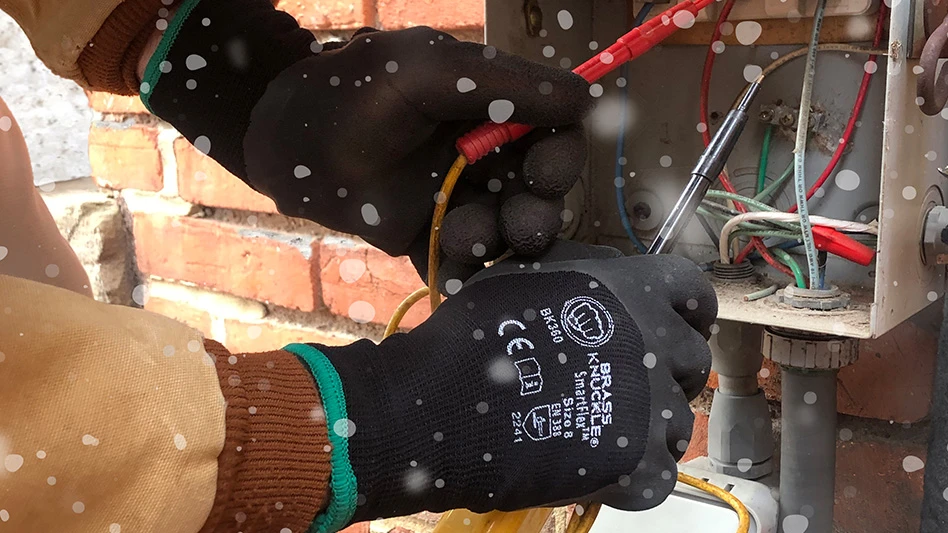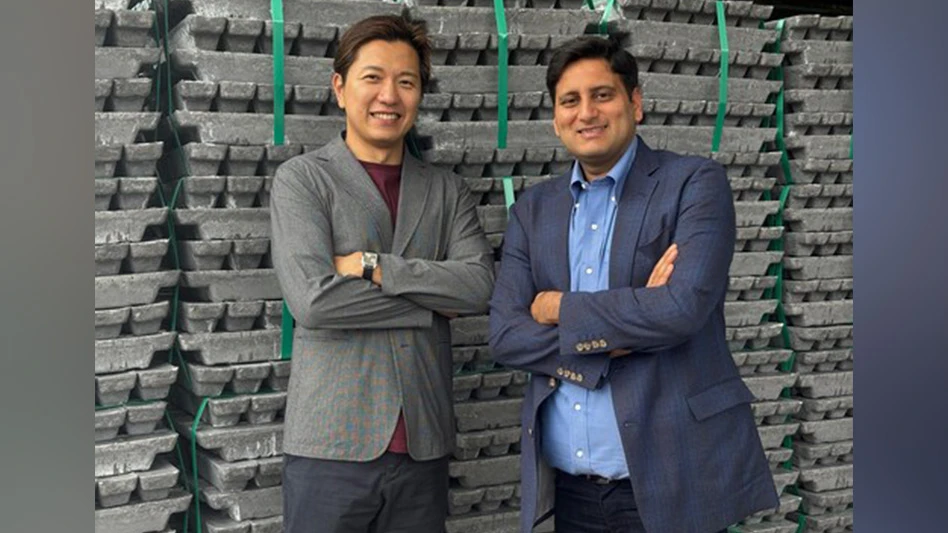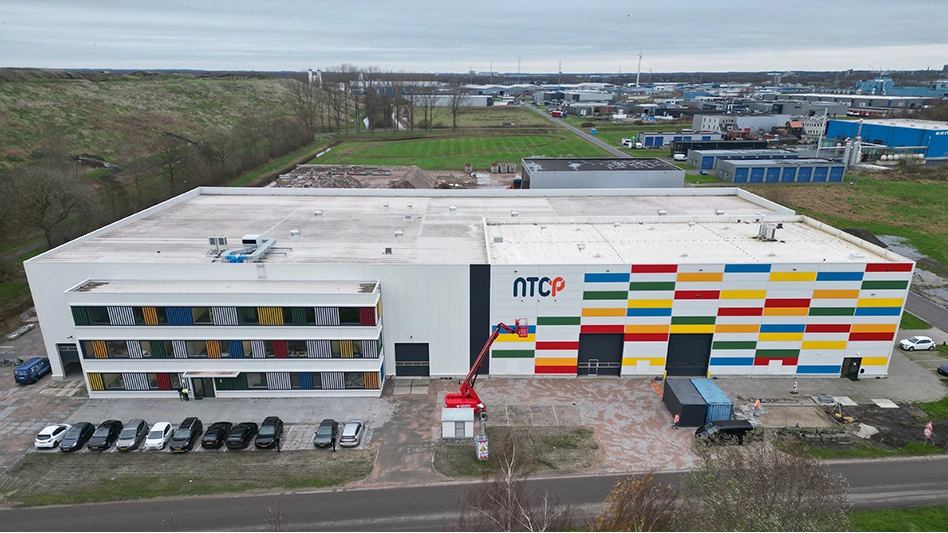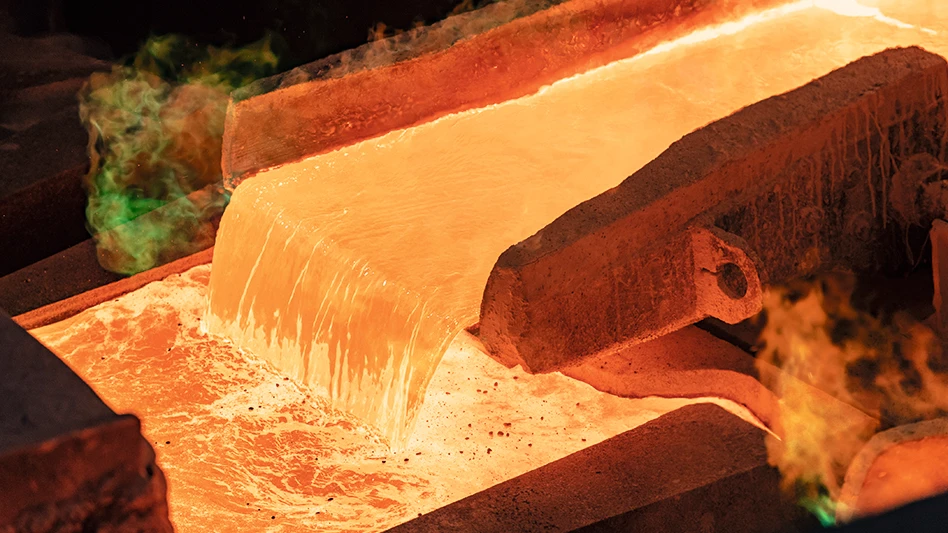 The global secondary commodity markets during much of 2015 ranged from decent to dismal this year across the four major grades of materials. Among the biggest factors affecting these sectors was the continuing signs of an economic slowdown in China. This led to declines in its demand for nonferrous scrap and also increasing Chinese exports of finished and semi-finished materials (steel, aluminium). Another factor cited for the industry’s malaise: exchange rates between the euro and the U.S. dollar that seemed to almost switch places heading into 2015, causing buyers to consider finding new sources of material in many cases.
The global secondary commodity markets during much of 2015 ranged from decent to dismal this year across the four major grades of materials. Among the biggest factors affecting these sectors was the continuing signs of an economic slowdown in China. This led to declines in its demand for nonferrous scrap and also increasing Chinese exports of finished and semi-finished materials (steel, aluminium). Another factor cited for the industry’s malaise: exchange rates between the euro and the U.S. dollar that seemed to almost switch places heading into 2015, causing buyers to consider finding new sources of material in many cases.
The one sector that has seemed to be at least partially insulated from these factors, recovered fibre, has had its own share of difficulties. What follows is a rundown of some of the major forces that have affected the secondary commodities markets thus far in 2015.
Ferrous
As 2015 began, conditions in the ferrous scrap sector were already being affected by a major trend that would continue to figure prominently in the coming months. The difficulties, which seem to have affected steelmakers in India, Turkey, South Korea, Europe and the United States, were often attributed to low-cost imports of semi-finished steel coming from China. The nation is the world’s largest steelmaker, and mills in China now produce more than half of the world’s steel.
Scrap prices portrayed these difficulties, falling significantly in February, then again in October. At the beginning of the year, the price of No. 2 shredded scrap, as measured by RMDAS (the Raw Material Data Aggregation Service) was reported at $346 per gross ton, however that price dropped by $85 in February, before stabilizing over the spring, then beginning another round of declines in late summer and fall. In October, the RMDAS price of No. 2 shredded scrap had fallen to $184, a nearly 50% drop from its October 2014 level.
The Brussels-based World Steel Association (Worldsteel) reported in October that the Chinese economy has decelerated, as the impact of the rebalancing measures on the investment and real estate sector turned out to be more severe than expected. As a result, activities in the construction and manufacturing sectors have slowed considerably.
Commenting on that organization’s recently released Short Range Outlook for 2015 and 2016, Hans Jürgen Kerkhoff, chairman of the worldsteel Economics Committee says, “It is clear that the steel industry has, for the time being, reached the end of a major growth cycle which was based on the rapid economic development of China. Combined with China’s slowdown we also face low investment, financial market turbulence and geopolitical conflicts in many developing regions. The steel industry is now experiencing low-growth which will last for the time it takes for other developing regions of sufficient size and strength to produce another major growth cycle.”
The association has reported that it expects 2015 steel demand in developed economies to contract by 2.1%. Only emerging economies, such as India and Mexico and countries in the ASEAN (Association of Southeast Asian Nations) and MENA (Middle East and North Africa) regions, were expected to maintain growth momentum based on positive domestic demand and progress in reform. Worldsteel also has forecasted that steel demand in the emerging and developing economies excluding China will, despite the major slowdown in some countries, grow by 1.7% in 2015.
World steel capacity utilisation for the year also indicated a downward trend during the third quarter of 2015 in particular. The September 2015 ratio for the 66 countries that report production numbers to worldsteel was 69.3 percent, a level that is 4.0 percentage points lower than September 2014.
Nonferrous
Nonferrous scrap markets, as with ferrous markets, have weathered difficult conditions thus far in 2015, and traders throughout the industry have implicated China’s reduced demand for nonferrous scrap is a major culprit.
As the year began, London Metal Exchange prices for copper increased during the first quarter and into the second, reaching an average level of close to $6,300 per tonne for May. However the LME price began dropping in June and averaged $5,088 for August before stabilizing in September.
Oversupply in the market has been blamed for much of the softness, as has the declining drop in Chinese demand.
In late summer, David Chiao of the U.S.-based trading firm Uni-All Group Ltd. and president of the Brussels-based Bureau of International Recycling (BIR), cited a number of factors that were weighing heavily on the nonferrous sector. Included among those was China’s crackdown on corruption that was slowing the real estate sector, and hence its demand, as well as the August devaluing of the Chinese renmimbi by about 3%. Chiao also pointed to overcapacity among both copper mills and aluminium smelters as another issue and cited the Nikkei Hong Kong Purchasing Managers’ Index, which has shown a declining trend since 2014 and has registered below 50 for much of the last two years. A reading below 50 is widely believed to signal a contraction.
Through the year, many analysts had expressed skepticism about reports of a 7% growth rate in China, and in October China’s National Bureau of Statistics reported that acccording to preliminary estimates, the country achieved gross domestic product (GDP) growth of 6.9% for the first three quarters of the year.
Oversupply in the aluminium sector has been another widely cited trend for 2015. Will Adams, head of research for the London-based commodities research service FastMarkets (www.fastmarkets.com) says the excess supply of primary aluminium on the market this year has called for price cuts that would trigger production cutbacks.
Currency fluctuations also figured heavily throughout the year in the trade of nonferrous metals. Sidney Lazarus of South African based Non-Ferrous Metal Works delivered a presentation at the BIR Convention held in May in Dubai, United Arab Emirates, during which he told attendees that export markets in Europe have been bolstered by the decline in the value of the euro, which began in late 2014 and reached a low point in March, when €1 was worth about US$1.05. The exchange rate shift has not been welcome among U.S. scrap traders, whose scrap has become more expensive compared to other countries as a result.
However one region that has imported increasing levels of nonferrous scrap, namely aluminium, is India. At the BIR convention, Nasser Aboura, chairman of the United Arab Emirates-based Aboura Metals, said the nonferrous scrap sector in the Middle East and North African region has grown and that India had become the Middle East’s largest trading partner.
Plastic
Low prices for crude oil during 2015, at levels below $60 and $50 per barrel, have pushed down resin prices during the year, a situation that has negatively affected plastics recyclers. Evidence of the difficulties were seen in ownership changes that occurred in two major U.K. plastics recyclers over the past year. The low oil prices made it difficult for many European plastics recyclers to compete for end markets. In late 2014, EcoPlastics’ polyethylene terephthalate (PET) plastics recycling facility entered into administration and was acquired by the German investment firm Aurelius.
Just a few months later, Closed Loop Recycling was sold to the Dubai-based investment company Euro Cap. With the sale, the plastics recycling company’s new owners, along with managers of the plastics firm, were planning to seek the support of U.K. dairies and retailers to improve the market outlook for the recycled HDPE (high density polyethylene) plastics the company has targeted.
Raw materials supply was cited as another challenge this year. Speaking at the 2015 BIR World Recycling Convention & Exhibition in Dubai in May, Plastics Committee Chairman Surendra Borad of Belgium-based Gemini Corp. said that less material was available for export because of an increase in reprocessing within Europe.
There have been some investments in this sector in the past year as well. The German plastics recycling company MTM Plastics has invested close to €8.8 million to expand production facilities in Niedergebra, Germany. U.K.-based Jayplas also has installed new equipment, and in the Netherlands, QCP has been constructing a circular polymer recycling plant.
In the United Kingdom, England in October joined the rest of the U.K. in imposing a plastic bag fee. The fee of 5 pence per single-use plastic carrier bag is expected to significantly reduce the number of plastic bags taken from shops, says the U.K.’s Department for Environment, Food & Rural Affairs (DEFRA).
“Wales, Scotland and Northern Ireland have seen a dramatic fall in the number of plastic bags taken from supermarkets and we can expect a significant reduction in England,” says DEFRA Environment Minister Rory Stewart.
Paper
The recovered fibre market in 2015 seems to be one of the few bright spots, comparatively speaking, for the recycling industry this year.
The unusual U.S. dollar-to-euro exchange rate is one factor that has delivered momentum to European markets, with Asian buyers showing healthy demand there earlier this year. Demand from European mills has also been described as healthy this year for old corrugated containers and other grades.
Low inventories of recovered fibre reported at recycling plants has also helped to keep prices stable this year. For a more detailed report on the global conditions for recovered fibre, see “External forces,” by Bill Moore, beginning on page 43.
This report was compiled based on various articles written by the staff of Recycling Today Global Edition.
Latest from Recycling Today
- US Steel to restart Illinois blast furnace
- AISI, Aluminum Association cite USMCA triangular trading concerns
- Nucor names new president
- DOE rare earths funding is open to recyclers
- Design for Recycling Resolution introduced
- PetStar PET recycling plant expands
- Iron Bull addresses scrap handling needs with custom hoppers
- REgroup, CP Group to build advanced MRF in Nova Scotia
